News from NeuroEM
NeuroEM Uses Radio Frequencies to Reverse Cognitive Decline from Alzheimer’s
Published: Oct 24, 2024, by StartUp Health
During a research study aimed at seeing if cell phones cause cancer, Dr. Gary Arendash and his team at the University of South Florida made an accidental discovery about the therapeutic power of radio waves on neurodegenerative diseases. After initial clinical trials that confirmed the results, CEO Chuck Papageorgiou and his team are working to bring a commercial version of their device to the world.
A New Approach to Alzheimer's
There’s an exciting wave of innovation coming out of the world of Alzheimer’s and dementia. Most of the biggest headlines center around new drugs made by major pharmaceutical companies that target protein buildup in the brain and slow the progression of neurodegenerative diseases.
These are incredible developments and worthy of celebration, but they come with some limitations. They’re expensive, they only slow the disease, and they come with a few side effects, which are occasionally serious.
But there’s another wave of Alzheimer’s innovation gathering momentum that has made fewer headlines, and which appear to address all three of these problems. These are companies developing non-invasive tools that could stop or even reverse Alzheimer’s using novel techniques like electrical stimulation, light therapy, and, in the case of NeuroEM, the subject of this story, radio waves.
There’s a great story behind NeuroEM – their greatest discovery came about completely by accident – but first, let’s meet NeuroEM’s CEO, Chuck Papagorgiou.
Origin Story
Chuck is a fixer. Not the Hollywood mobster type but the kind that you call in to turn around a failing startup or help a multi-billion dollar business expand into a new country.
He’s done this kind of work for 20 years, in 47 countries. He’s helped UPS open up new country markets, helped AT&T integrate thousands of employees onto a new operations network, and founded and sold startups of his own. The through line has always been his ability to design tech solutions to solve big, hairy problems.
“I’m a solutions designer,” says Papageorgiou with his signature grin. “Startup companies, mergers and acquisitions, turnarounds, the problems are the same. It's just how you approach them.”
Ten years ago, Papageorgiou became an advisor to the Moffitt Cancer Center and the experience shifted his focus. It was his first exposure to health innovation and being in that world convinced him that he wanted to spend the rest of his life using his unique set of skills to make the world a healthier place.
Then he received a serendipitous phone call. An old investor friend was working with a company called NeuroEM and asked Chuck to “take a look.” The company was founded in 2013 as a research project to see if cell phones cause cancer. Spoiler alert: they don’t. Ten years of research proved so, but the time wasn’t for naught. In the process of studying how radio frequencies impact the brain, they made an accidental discovery.
In their lab studies, the mice that received certain radio frequencies not only didn’t get brain cancer, they began performing better at cognitive tests. And these weren’t just any mice doing well in the maze – they had Alzheimer’s disease.
In short, NeuroEM claimed to have stumbled upon a potential treatment for Alzheimer’s. Papageorgiou was skeptical but curious, and after going deep into the research, he was floored.
Under the Hood
Here’s what he discovered. NeuroEM uses radio frequencies to deliver a transcranial electromagnetic treatment that physically changes factors in the brain. They don’t quite know why it works this way, but using the same safe radio frequencies used by most cell phones – backed by decades of research – they can actually untangle proteins in the brain that have gotten twisted. It’s those twists that lead to the loss of cognition. The approach has been reviewed and labeled as low-risk by experts, including the Western Institutional Review Board and the FDA.
“NeuroEM unwinds the toxic combination of proteins in the brain so that when you're sleeping, your body's glymphatic system, sometimes referred to as the brain’s detox system, can flush it naturally,” says Amanda Patanow, NeuroEM’s Chief Product Officer.
NeuroEM’s therapy is administered through a soft headset and is meant to be used for one hour, twice a day at home. The user can go about their daily life while receiving the therapy.
While the number of people who have been tested with NeuroEM is still small, the early results have been so “directionally positive” says Papageorgiou, that they demand attention. In one study NeuroEM tracked eight people with an Alzheimer’s diagnosis as they used the NeuroEM headset. Seven out of the eight subjects saw stable or improved cognition within two months and maintained that after the trial was concluded. A reminder that the best new drugs on the market only slow mental decline. None of them stop it, let alone improve mental capacity.
For Papageorgiou, one patient from the study stands out, a woman named Marty. She enrolled in the trial in her 80s having already received a diagnosis of Alzheimer’s. Papageorgiou talked with her during his initial assessment of the technology and keeps up with her progress. Recently the NeuroEM team got pictures and a note letting them know that Marty had celebrated her 90th birthday and was scoring in the normal range for cognitive behavior for her age.
“I get goosebumps thinking about the impact we had on Marty’s quality of life and her family,” says Papageorgiou.
Their results were explosive and made mainstream news. At one point late-night TV host Stephen Colbert even did a bit about it, appearing on screen with cell phones attached to his head.
It was all adding up for Papageorgiou – the lab studies, the human trial, the potential for global impact – so he dove in as CEO and did what he does best. He restructured the company, hired a dream team, and set a course for validation and commercialization.
“This could be a multi-billion-dollar company, and then some, if we're right,” he says. “And in 30 years, I’ve never said the ‘b’ word when forecasting for any startup company.”
The obvious next move for NeuroEM is to take the positive results from their small human trial and replicate them on a much larger stage. They’re doing this work on two parallel tracks. On one, they’re validating NeuroEM as a wellness device, which can be done in a little over a year and can lead to the early sale of a commercial product. In parallel, they’ll work with the FDA to do the longer-term validation of NeuroEM as an actual Alzheimer’s treatment. While that process can take years, they’ve had early positive signs – they were the first device to receive Breakthrough status from the FDA for the treatment of Alzheimer's dementias.
Final Word
NeuroEM is still early, and raising capital to move forward, but their results in mice and humans are incredibly exciting for anyone who cares about Alzheimer’s and dementia. Here could be a safe, non-invasive, low-cost therapy that actually stops Alzheimer’s in its tracks. Early signs suggest that it actually heals the brain, and in ways that could have a range of positive effects yet to be studied.
This is a true Health Moonshot mission, and Chuck and his team have the experience – and fire – needed to see it through. Time will tell how new, larger studies confirm NeuroEM’s value as a wellness device, and ultimately an Alzheimer’s treatment, but we’re incredibly proud to support them on the journey. Join us in welcoming NeuroEM to StartUp Health’s Alzheimer’s Moonshot Community.

